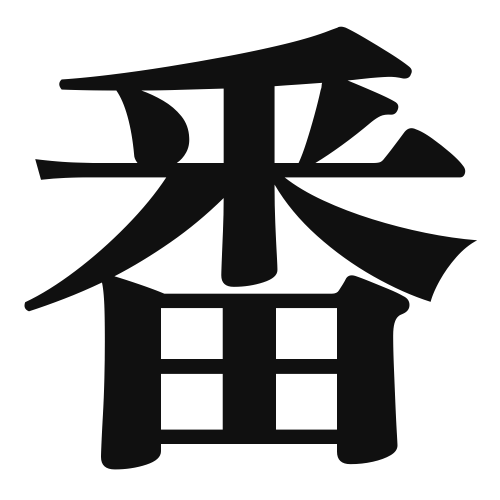1. Overview of Meaning
The kanji “番” (ban) primarily means “number” or “turn.” It is often used to indicate a sequence or order, such as in counting or taking turns in various activities.
2. Formation and Radical
Formation of the Kanji: The kanji “番” is a compound character that combines elements to convey its meaning. It is not a pictogram or ideogram but rather a character that represents a concept through its structure.
Radical: The radical for “番” is “番” itself, which is used in various other kanji to convey similar meanings related to order and sequence.
3. Examples of Usage
Common Words and Phrases: Some frequently used words that include “番” are:
- 番号 (ばんごう, bangō) – “number” (as in a phone number)
- 番組 (ばんぐみ, bangumi) – “program” (as in a TV program)
- 順番 (じゅんばん, junban) – “order” or “turn”
Example Sentences in Daily Conversation:
- 次は私の番です。 (つぎはわたしのばんです。) – “It’s my turn next.”
- 電話番号を教えてください。 (でんわばんごうをおしえてください。) – “Please tell me your phone number.”
4. Synonyms and Antonyms
Similar Kanji: A similar kanji is “順” (じゅん, jun), which means “order” or “sequence,” but it emphasizes the arrangement rather than the act of taking turns.
Antonyms: An antonym could be “無” (む, mu), meaning “none” or “nothing,” which contrasts with the idea of having a specific order or number.
5. Cultural and Historical Background
Relation to Japanese Culture: The concept of “番” is significant in Japanese culture, especially in contexts like games, festivals, and traditional practices where order and turns are essential.
Proverbs and Idioms: One common expression is “番を待つ” (ばんをまつ, ban o matsu), which means “to wait for one’s turn,” reflecting the importance of patience and order in social interactions.
